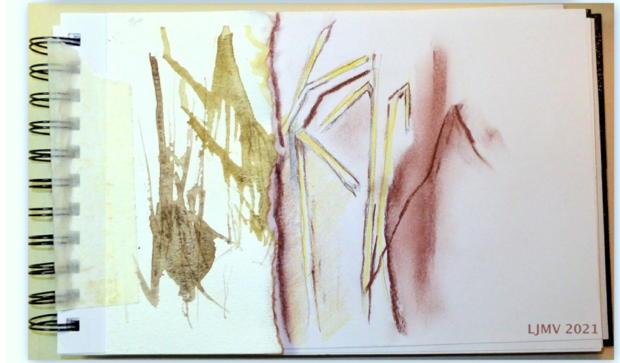
In March 2021, eighteen readers joined The Well and visual artist Leslie Iwai for our Creative Practice Workshop Series, “A New Thing Springs Forth.” Leslie is an installation artist whose work is often interactive and tactile, so she brought her skill with experiential art to this workshop. Participants were invited to make art as a way of reflecting on Scripture through multiple senses and experiencing the text in a personal, embodied way to gain new understanding of God’s word for us. We hope that as you read about this process you will be inspired to create your own piece of art in response to Scripture or even to have your own creative practice group. We’ll conclude with an outline of the steps we followed.
Before the first virtual workshop, Leslie invited the participants to read and meditate on Isaiah 42:1-9, focusing on the imagery in the passage.
Here is my servant, whom I uphold,
my chosen, in whom my soul delights;
I have put my spirit upon him;
he will bring forth justice to the nations.
He will not cry or lift up his voice,
or make it heard in the street;
a bruised reed he will not break,
and a dimly burning wick he will not quench;
he will faithfully bring forth justice.
— Isaiah 42:1-3, NRSV
Leslie prompted the participants to begin visually expressing ideas from the Scripture, and each participant found 1-3 images for everyone to view at the beginning of the workshop. Here are a few examples of visual ideas the participants drew from Isaiah 42:1-9.
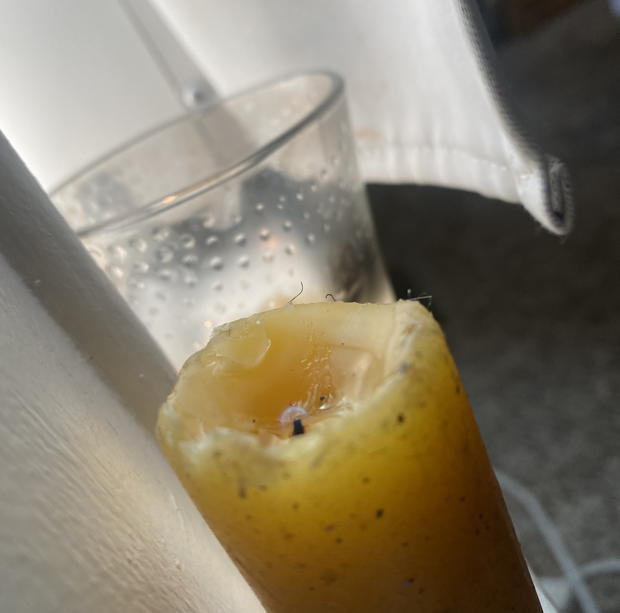
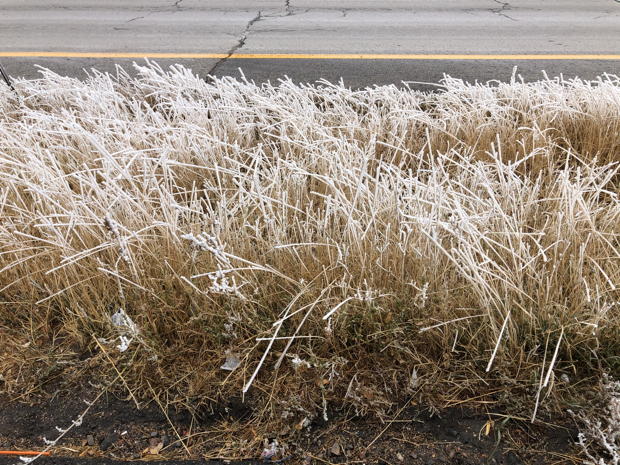
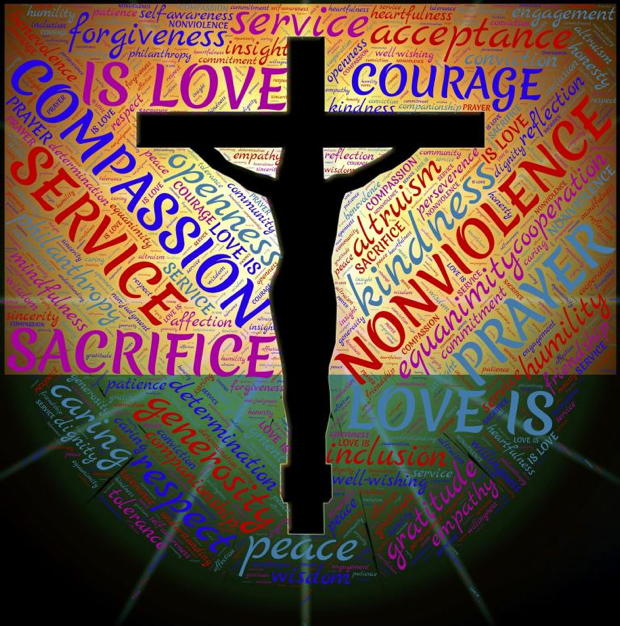
Leslie structured the workshop time around lectio divina interspersed with visual arts prompts and time to create, and participants discussed their reflections in breakout groups before holding up their artwork to the camera for everyone to see. Drawing on imagery from Isaiah 42:3, which is reflected in several of the participants’ found images, Leslie gave the participants ten minutes after the first reading of the passage to draw something inspired by the words.
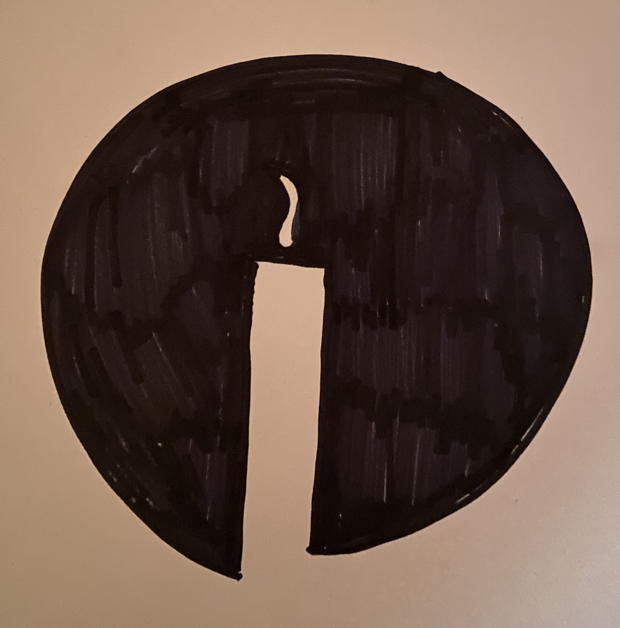
Katherine Petillo drew a candle.

Laima Mikaliukas drew reeds.
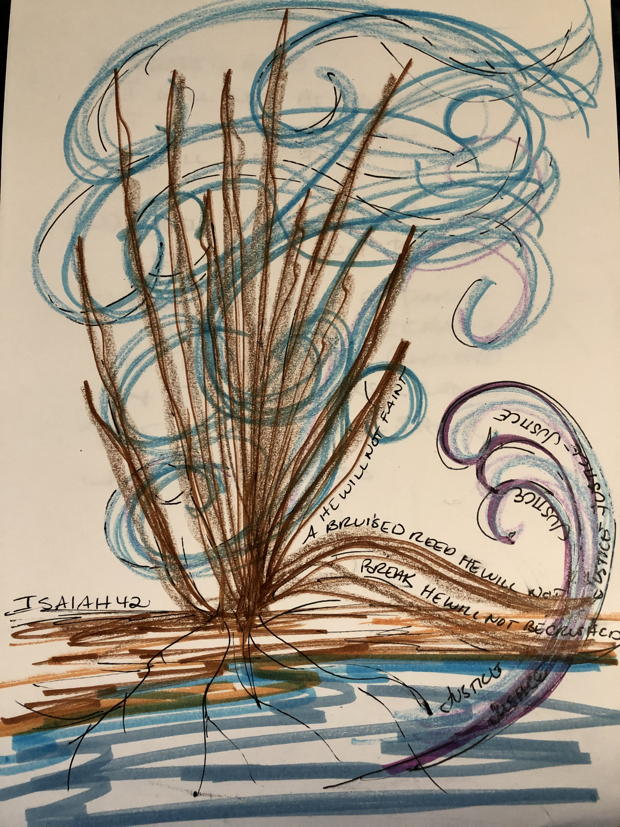
Lily Lewin drew something more abstract.
After the second reading, Leslie asked the participants to partially tear their drawings and then take ten minutes to thoughtfully piece them back together and add something new. It was amazing to see the visual transformation that took place in the process of tearing apart something old and creating something new out of not-quite-broken pieces.
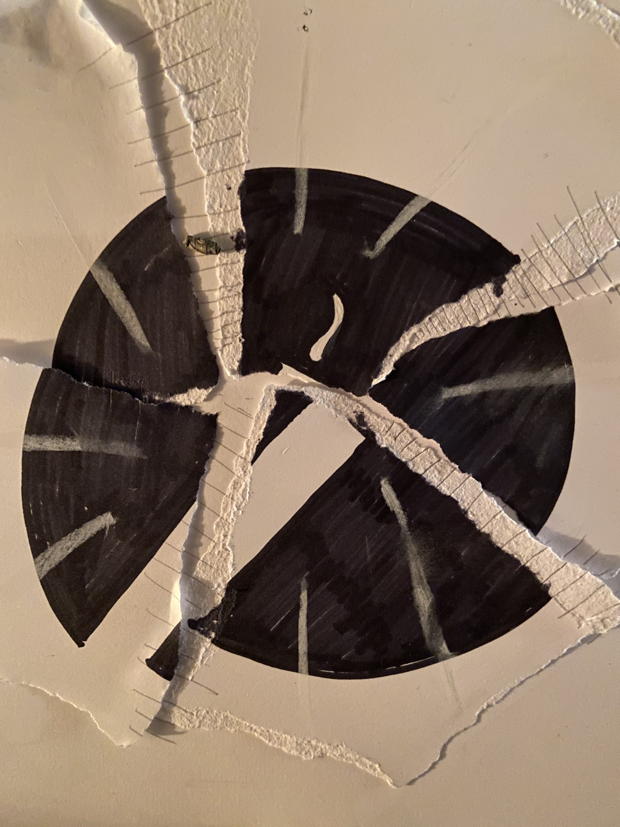
Katherine’s candle turned into a radiating light.
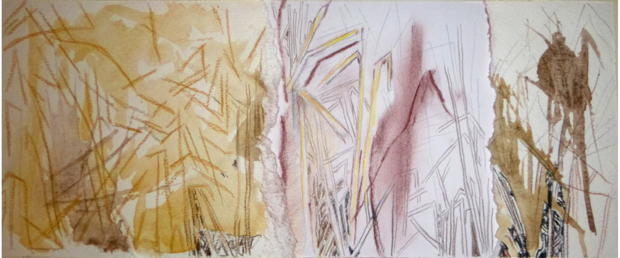
Laima’s reeds grew and multiplied.
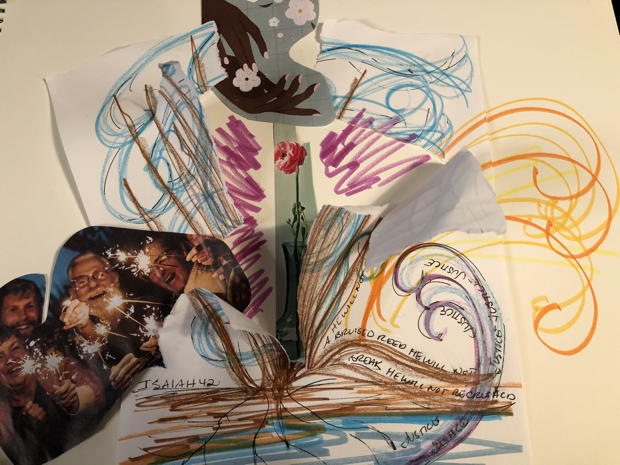
Lily’s abstract piece developed more dimensions.
Later some participants shared how the process of making art to reflect on Scripture brought new understanding of the words. Lois Bromley highlighted that the art gains dimensionality after being broken, and this points to the ways God can reveal more dimensions of God’s character in our experiences of brokenness.
To prepare for the second workshop, Leslie invited the participants to read Isaiah 43:15-21 and locate an object relating to imagery in the passage.
I am the Lord, your Holy One,
the Creator of Israel, your King.
Thus says the Lord,
who makes a way in the sea,
a path in the mighty waters,
who brings out chariot and horse,
army and warrior;
they lie down, they cannot rise,
they are extinguished, quenched like a wick:
Do not remember the former things,
or consider the things of old.
I am about to do a new thing;
now it springs forth, do you not perceive it?
I will make a way in the wilderness
and rivers in the desert.
— Isaiah 43:15-19, NRSV
After the first lectio divina reading, she asked them to fold the edges of their drawing paper in to form a central seam, then she gave them time to sketch their object over the seam.
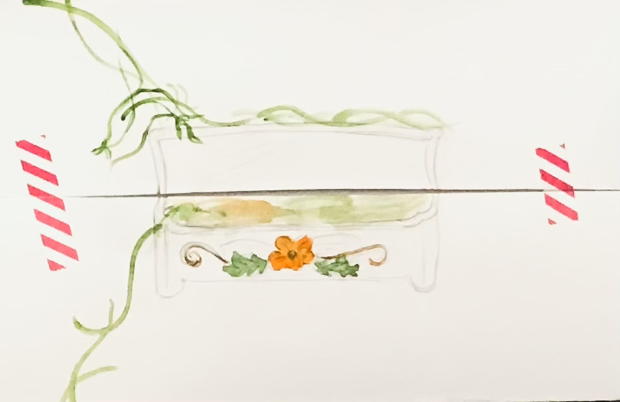
by Paola Zinsli-Aguilar
After the second reading, Leslie asked the participants to open the folded drawing paper and fill in the blank space between the two sides of their old drawing with something new.
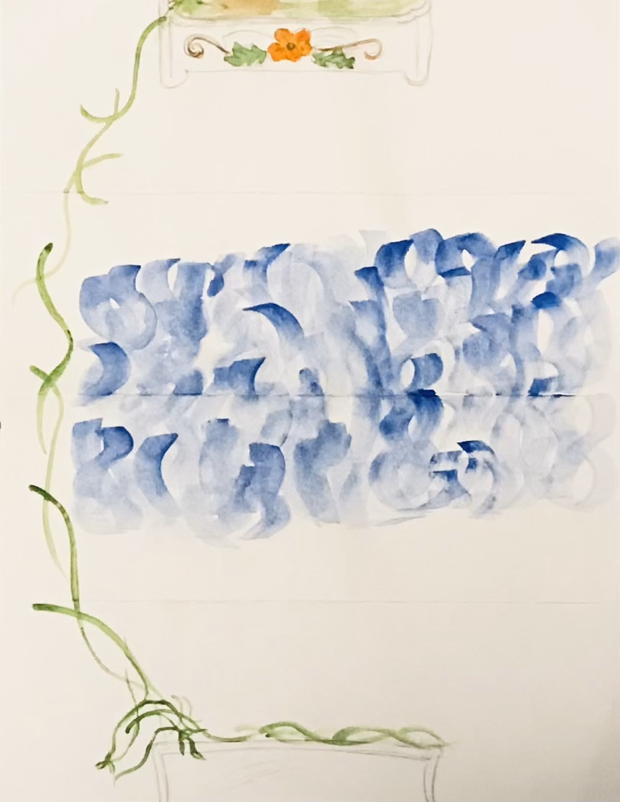
by Paola
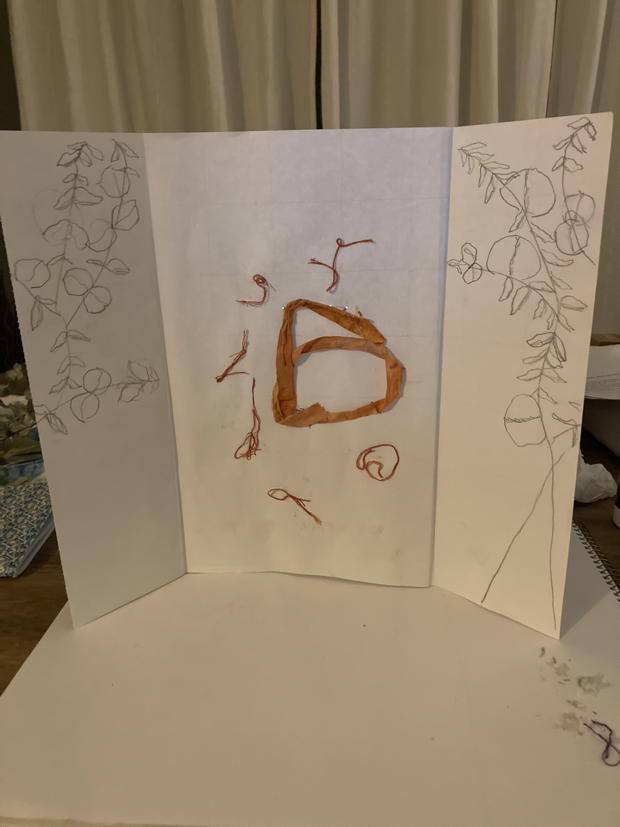
by Cynthia Reynolds
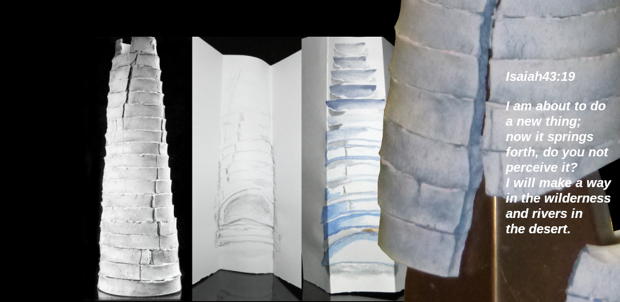
by Laima
Several participants filled their blank space with representations of water, reflecting the imagery in Isaiah 43:19, which says, “I am about to do a new thing; now it springs forth, do you not perceive it? I will make a way in the wilderness and rivers in the desert.” As they discussed their drawings together, the participants began to draw out an interpretation from the relationship between the two passages they’d reflected on from Isaiah 42 and 43. While engaging with Isaiah 42, they worked to preserve and rebuild their partially torn drawings, and they noticed in the text that God preserved something broken and transformed it into something beautiful. With Isaiah 43, the blank space that was opened up in the middle of their existing drawings pointed to the way God in the text completely “extinguished” something old, and the way that a lot of participants filled that cleared out space with images of water highlighted the idea in the text that God makes a source of life in the midst of barren wilderness.
The workshop participants found the process of putting God’s word in physical form helpful for remembering and understanding the biblical text, and Leslie’s instruction to focus on the details of the text guided them to generate specific imagery that helped lead to new discoveries about its deeper meaning. They felt encouraged to incorporate visual arts into their personal devotional practices.
If you’d like to try making art as a way of engaging with Scripture and growing in your relationship with God, you can follow the process Leslie created for this Creative Practice Workshop Series:
- Select a short passage of Scripture, about 1-8 verses.
- Read the passage aloud, then make note of any words that stand out to you.
- Read the passage aloud a second time, then spend ten minutes creating a drawing or other piece of art that expresses one or more of the words you noted.
- Journal for 1-2 minutes about why you made the choices you did to create your first piece of art. Considering the ideas you see in the biblical text, write down one action you could do to transform the piece you made (but don’t do it yet).
- Read the passage aloud a third time, then perform the action you wrote down to transform your original piece of art. Then give yourself ten minutes to add to the transformed piece.
- Journal for 1-2 minutes about why you made the choices you did to transform and add to your original piece of art. What do you notice about the text that you didn’t notice in the first reading? What do you understand about God in a new way at the end of this process?
- Pray about what you experienced through this process of engaging with God’s word.
You can also do this with a partner or a group, using the journalling time to instead discuss your reflections together.